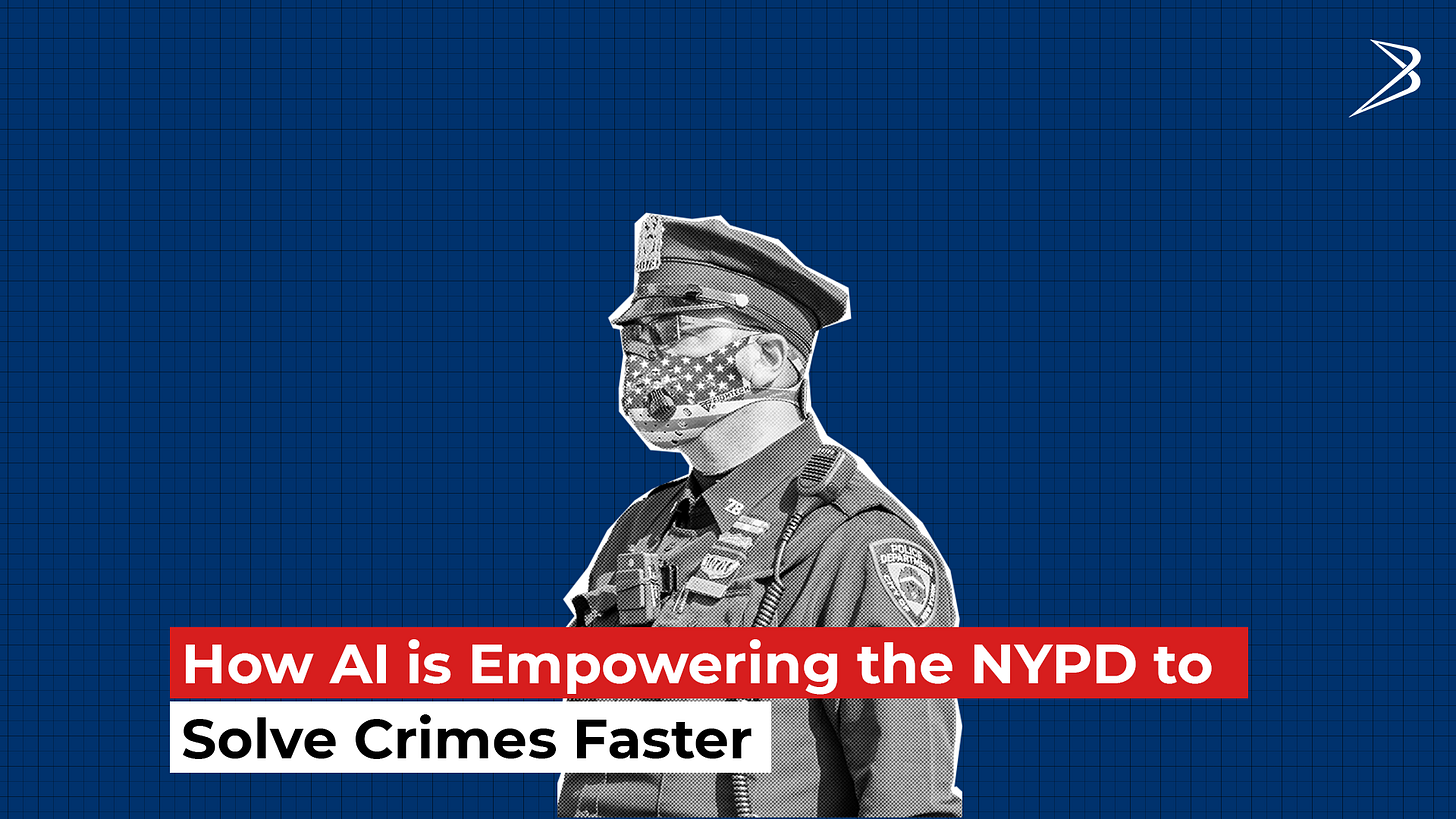How AI is Empowering the NYPD to Solve Crimes Faster
This week we discuss how the NYPD uses Patternizr to crack complex crime patterns
Hey there!
Today, let's dive into something super intriguing:
How the New York City Police Department (NYPD) is using a cool computational tool called Patternizr to crack down on crime.
It's like a super-smart detective that uses machine learning, a type of artificial intelligence, to spot crime patterns.
This tool has been around since 2016, but it's been kind of under wraps until recently when the developers published a research paper about it.
Patternizr looks at data from crimes like burglary, robbery, and grand larceny over the past 10 years. It's the first tool of its kind in law enforcement.
The NYPD even brought on board 100 civilian analysts in 2017 to work with Patternizr. Plus, it's available to all officers through the NYPD’s Domain Awareness System, which is like this huge network of sensors and databases all over the city.
Here's the cool part: Patternizr helps connect similar crimes, which is super important in solving them.
Evan Levine, the NYPD’s assistant commissioner of data analytics, explained that individual crimes in a series might not give enough clues to catch a criminal.
But when you see the bigger pattern, it becomes clearer.
Patternizr uses something called a "seed" case, which analysts feed into the system. It then compares this case against hundreds of thousands of crime records.
The tool then gives a "similarity score" and ranks potential matches, helping analysts spot patterns way faster than the old-school way.
One example Levine shared was about three knife-point robberies near a Bronx subway station. Patternizr helped connect those crimes quickly, which would have taken much longer to do manually.
Now, with any tech like this, there's always a worry about bias, right?
The developers made sure that sensitive info, like race and gender, isn’t included in the models. They're really careful about this, and their research shows that Patternizr doesn't recommend any suspect race more than random chance would.
However, some folks, like the American Civil Liberties Union, want an independent audit of the tech to make sure it's not biased.
The NYPD plans to use Patternizr for more types of crimes, but not for really violent stuff like murder because those cases already get a ton of resources.
The idea is to make the police's job easier and more efficient while avoiding the errors that can happen with human memory and analysis.
So, next time you hear about a crime being solved in NYC, there might just be a bit of AI wizardry behind the scenes.
It's a fascinating blend of tech and traditional policing, making the city a safer place for everyone.
Want a fresh take on data science delivered straight to your inbox every Monday?
Subscribe to "Beyond Data Digest" now and kickstart your week with bite-sized, jargon-free insights that make data science easy for everyone.
Don't miss out on your weekly dose of clear and concise data wisdom!
Visit our website www.puttingdatatowork.com if you wish to know how can we help you!
Till then
Catch you next time for more data adventures!
******************************************************************************************
Computational Tool: A software program or system that uses computer technology to solve a specific problem or perform a specific function. In the context of the NYPD, it refers to the software used for analyzing crime data.
Machine Learning: A subset of artificial intelligence (AI) where computers are trained to learn from data and make decisions or predictions based on that data, without being explicitly programmed for each task.
Patternizr: A specific machine learning tool used by the NYPD to identify patterns in crime data. It analyzes historical crime data to spot trends and similarities between different cases.
Domain Awareness System: A comprehensive surveillance and analysis system that combines data from a variety of sources, including sensors, databases, and other technical infrastructure, to assist in law enforcement and city management.
RFID (Radio-Frequency Identification): A technology used to identify and track tags attached to objects. RFID is used in various applications, including tracking inventory and assets.
Seed Case: In the context of Patternizr, it refers to a particular crime case that is used as a starting point for the software to search for similar patterns or cases in the crime database.
Similarity Score: A numerical value used in data analysis and machine learning to represent how similar two sets of data are. In Patternizr, it helps to identify how closely related different crime cases might be.
Rank-Ordered List: A list of items sorted based on certain criteria. In Patternizr, it's a list of crime cases sorted based on their similarity to the seed case.
SKU (Stock Keeping Unit): A unique identifier for each distinct product and service that can be purchased.
Data Analytics: The process of examining data sets to conclude about the information they contain, often with the aid of specialized systems and software.
Unstructured Text: Textual data that does not have a predefined format or organization, often found in sources like narratives, reports, or social media posts.
Biased Models: In data science and AI, this refers to models that may produce prejudiced results due to biased data or algorithms.
Algorithmic Bias: The potential for algorithms to reflect or propagate unfairness or prejudice, often due to underlying biases in the data or the way the algorithm is designed.


